MARIANI’SVirtual
Gourmet
June 23,
2013
NEWSLETTER
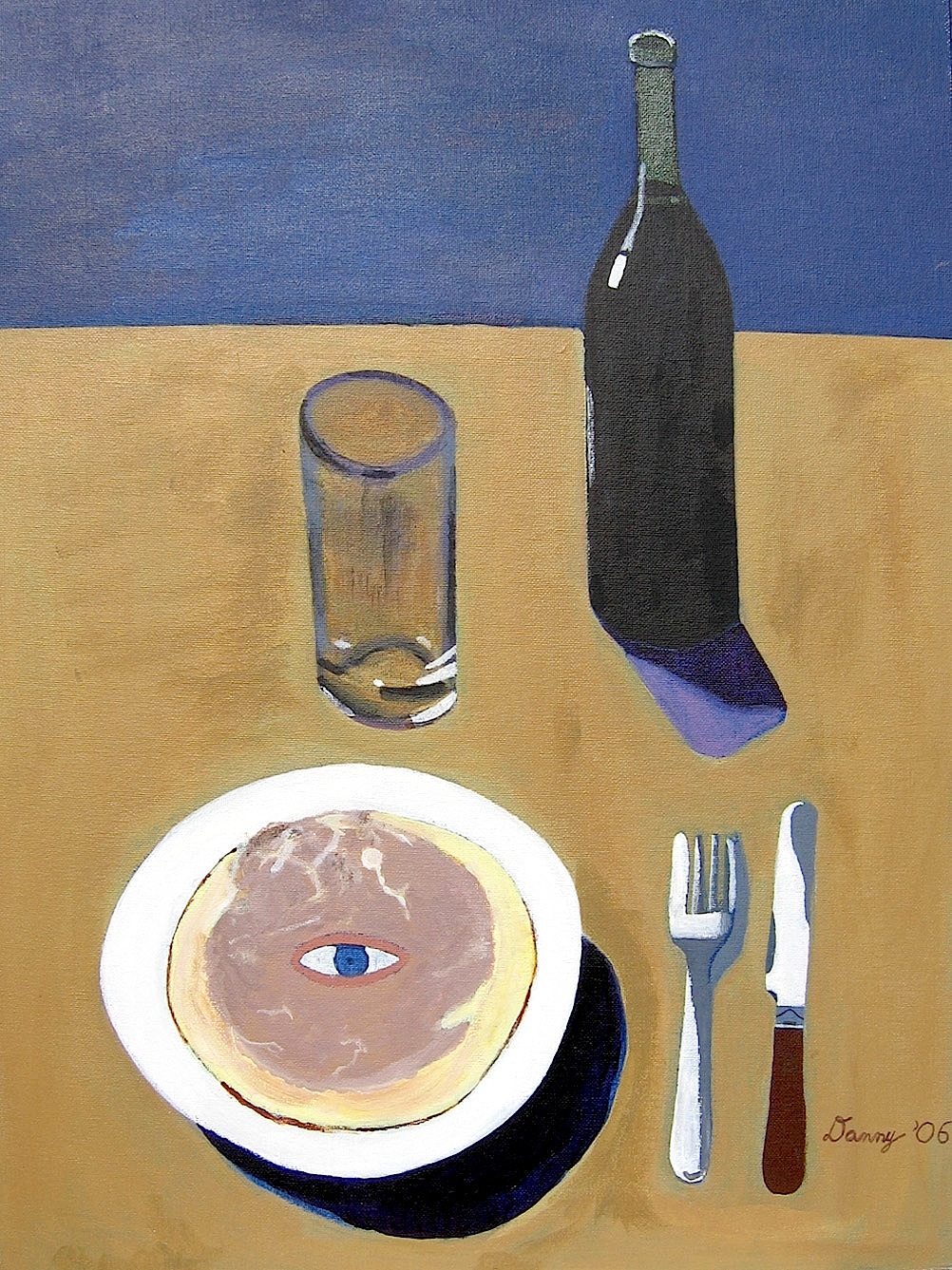
"The
Portrait" by René Magritte (1935)
❖❖❖
THIS WEEK
DRIVING THE CALIFORNIA COAST,
Part Two
by Christopher Mariani
IS A TERMINAL DISASTER!
By John Mariani
NEW YORK CORNER
Gotham Bar and Grill
by John Mariani
NOTES FROM THE WINE CELLAR
Chilean Wine and Cuisine
by Mort Hochstein
❖❖❖
DRIVING THE
CALIFORNIA COAST
Part Two
by Christopher Mariani
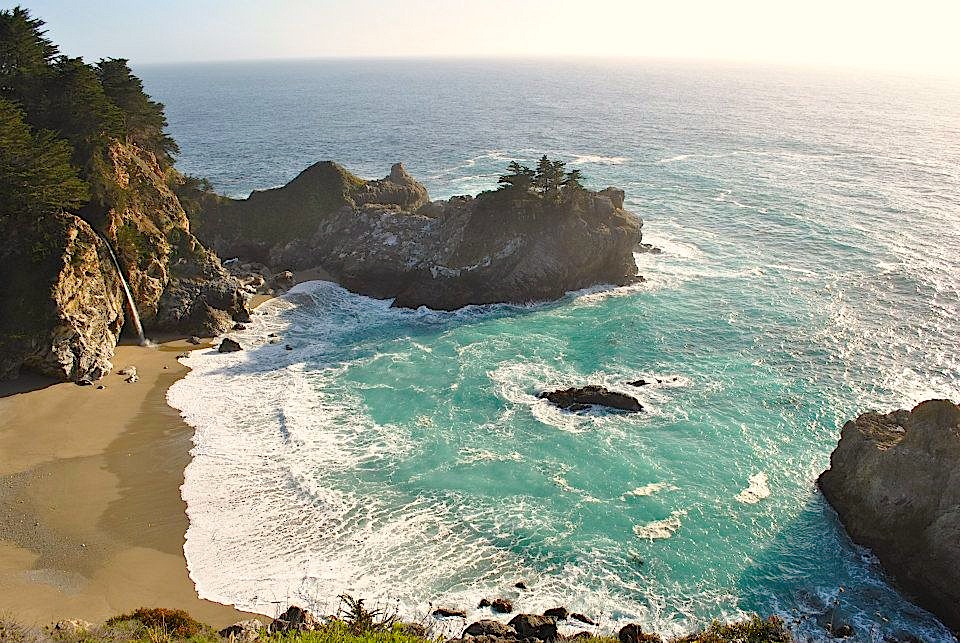
Big Sur, California
With San
Diego and La Jolla in our rear view mirrors, we drove
north and officially began our California road trip, a
drive I’ve been looking forward to for most of my
life. Driving up Highway 1 in a Mustang convertible,
weaving up and down the mountain pass, alongside the
great Pacific, hugging the road’s corners with a
frightful drop to the sandy beaches just inches away
is a breathtaking experience. But, before our journey
began, we had to stop in for a quick lunch at L’Ermitage Hotel
in Beverly Hills.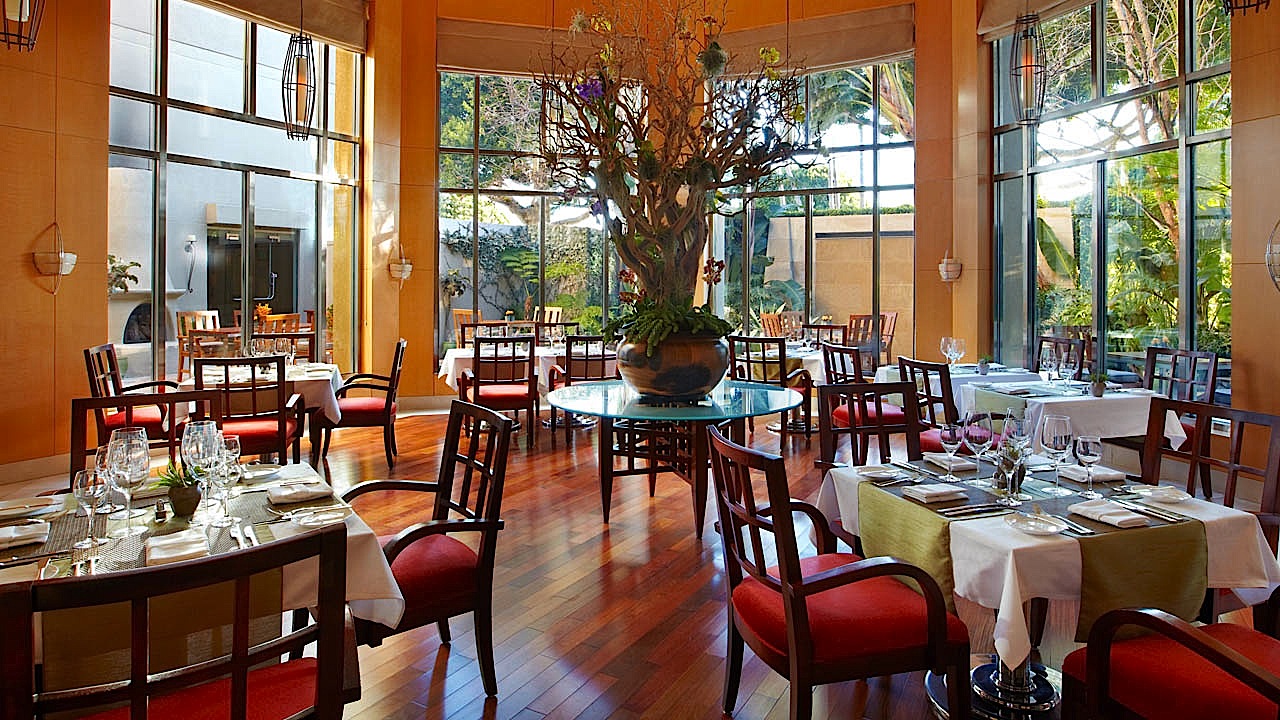
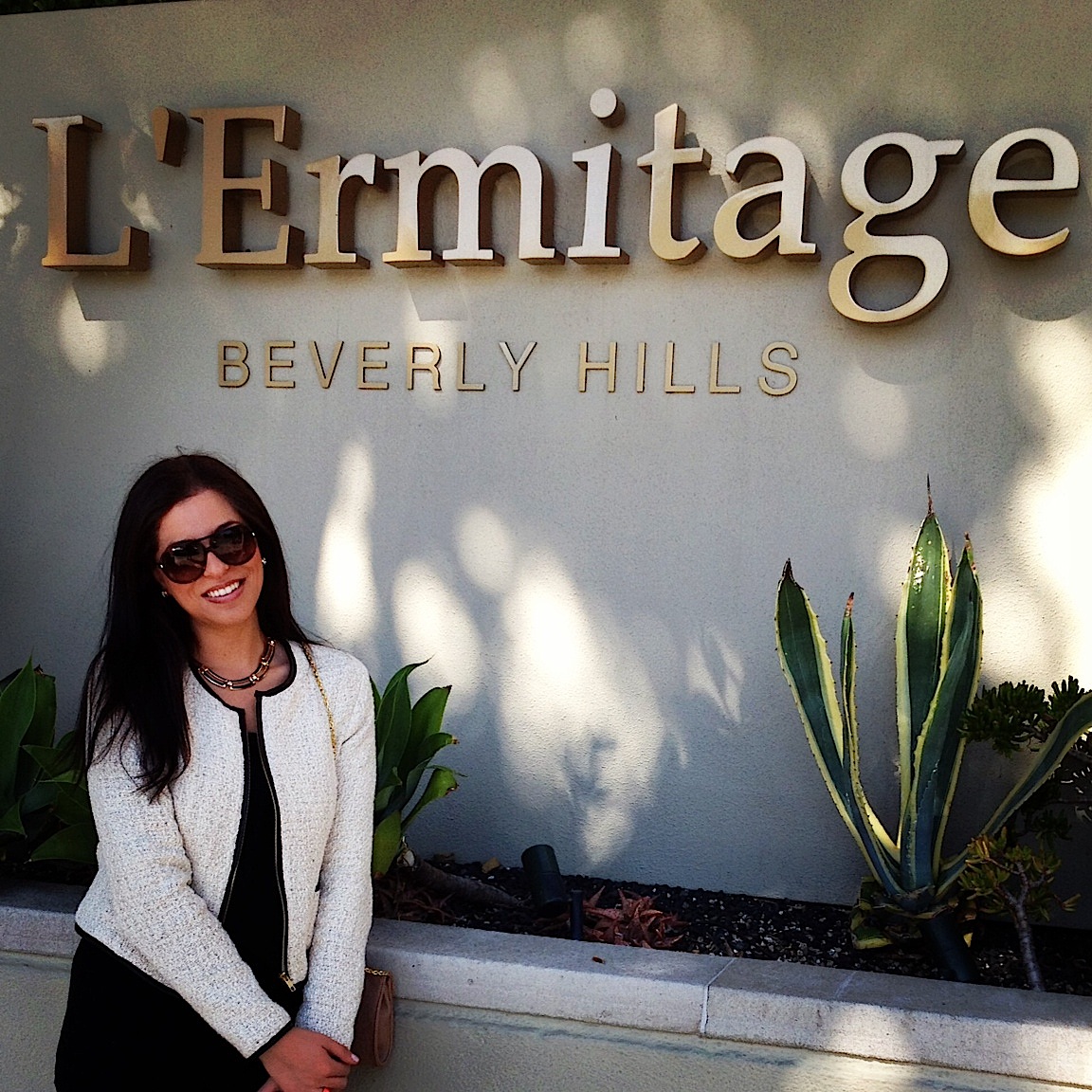 There is nothing more posh than pulling
up to the valet at L’Ermitage then being whisked away,
through the front doors, knowing you are in the
cordial hands of one of LA’s finest deluxe hotels.
After being shown through the lobby, we found our
dining table at Livello
restaurant (right)
awaiting us. We began a relaxing afternoon with two
glasses of crisp Champagne, wondering if we should
check-in for the night or continue on to Santa
Barbara. The stay was tempting but we knew our next
destination would be just as impressive.
There is nothing more posh than pulling
up to the valet at L’Ermitage then being whisked away,
through the front doors, knowing you are in the
cordial hands of one of LA’s finest deluxe hotels.
After being shown through the lobby, we found our
dining table at Livello
restaurant (right)
awaiting us. We began a relaxing afternoon with two
glasses of crisp Champagne, wondering if we should
check-in for the night or continue on to Santa
Barbara. The stay was tempting but we knew our next
destination would be just as impressive.
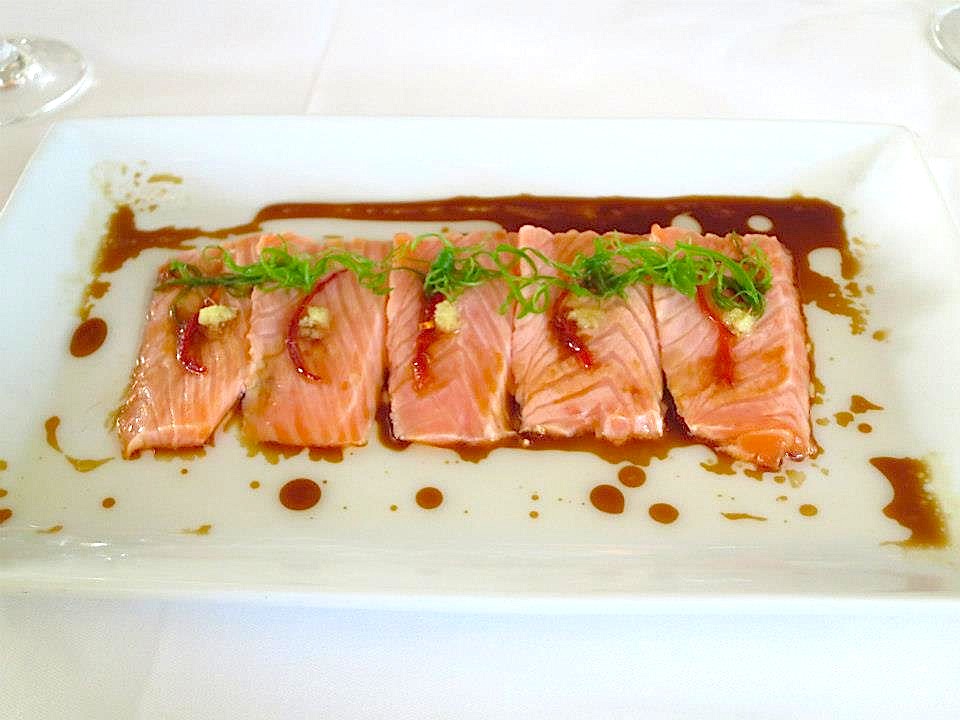 At Livello, we eased into
the meal with thin slices of velvety tuna tataki, topped
with green onions, ginger, garlic and a delicate ponzu
sauce. Salmon sashimi (below) was lightly seared with
garlic oil and served with sundried tomatoes, ginger,
garlic chips and soy sauce. For entrees, we enjoyed an
authentic spaghetti alla bolognese, sprinkled with
sharp pecorino cheese and fresh green basil--an odd
encore to the two Japanese-inspired appetizers yet all
the more notable for showing Chef Benjamin Dayag's mastery of two polar cuisines. The menu
also offers 28-day aged beef burgers and a pulled duck
confit salad and offers top tier desserts, including a
decedent warm chocolate cake with marshmallows.
My only criticism was a bland pizza alla
margherita; as a New Yorker, I am admittedly jaded
about pizzas, but this was one component of the meal I
know can improve.
At Livello, we eased into
the meal with thin slices of velvety tuna tataki, topped
with green onions, ginger, garlic and a delicate ponzu
sauce. Salmon sashimi (below) was lightly seared with
garlic oil and served with sundried tomatoes, ginger,
garlic chips and soy sauce. For entrees, we enjoyed an
authentic spaghetti alla bolognese, sprinkled with
sharp pecorino cheese and fresh green basil--an odd
encore to the two Japanese-inspired appetizers yet all
the more notable for showing Chef Benjamin Dayag's mastery of two polar cuisines. The menu
also offers 28-day aged beef burgers and a pulled duck
confit salad and offers top tier desserts, including a
decedent warm chocolate cake with marshmallows.
My only criticism was a bland pizza alla
margherita; as a New Yorker, I am admittedly jaded
about pizzas, but this was one component of the meal I
know can improve.
After two short espressos,
we reluctantly left the L’Ermitage and drove north to
Santa Barbara, where we checked into the Four Seasons (below), which
sits directly on the coastline, overlooking the
powerful blue ocean. The hotel is an extravagance of
the brand’s elite hospitality and service. We pulled
into the property and were immediately awed by the
botanical diversity surrounding the driveway
leading to the main entrance. Tall palm trees swayed
back and forth as guests moseyed along quaint pathways
that help you navigate the estate.
The resort is scattered with
private cottages,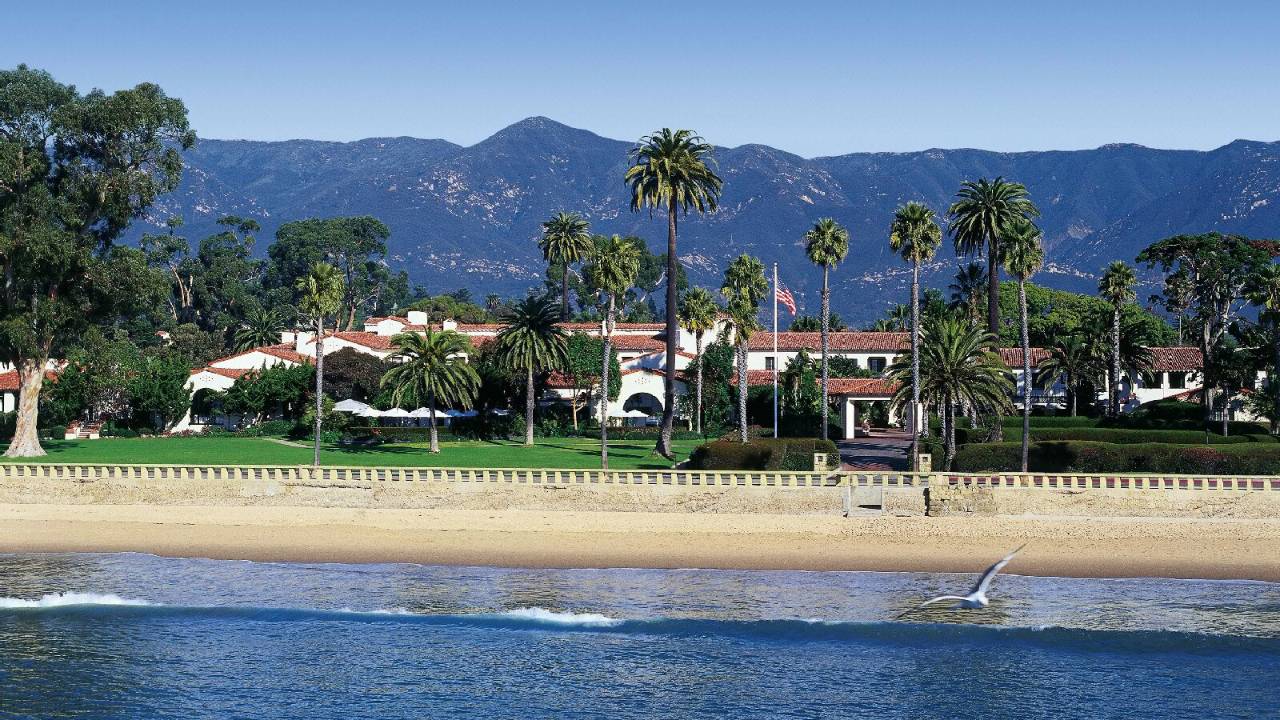 tennis courts and amazing views of the
ocean. That afternoon, we visited the hotel’s Cabana
club where we lounged, sandwiched between an Olympic
size swimming pool and the glistening ocean. A few
cocktails later, we were fully submerged in the Four
Seasons experience.
tennis courts and amazing views of the
ocean. That afternoon, we visited the hotel’s Cabana
club where we lounged, sandwiched between an Olympic
size swimming pool and the glistening ocean. A few
cocktails later, we were fully submerged in the Four
Seasons experience.
That evening we dined by
candlelight at Bella
Vista (below),
a short walk from our lovely cottage. We sat outdoors,
mesmerized by a large fire pit as we clinked glasses
and exchanged smiles. Thick cuts of grilled octopus
were mixed with a green olive potato salad and dressed
with a warm pancetta and Meyer lemon vinaigrette. The
first wave of food also included crispy lump crab meat
croquettes, thinly sliced prosciutto di Parma and warm
focaccia bread spread 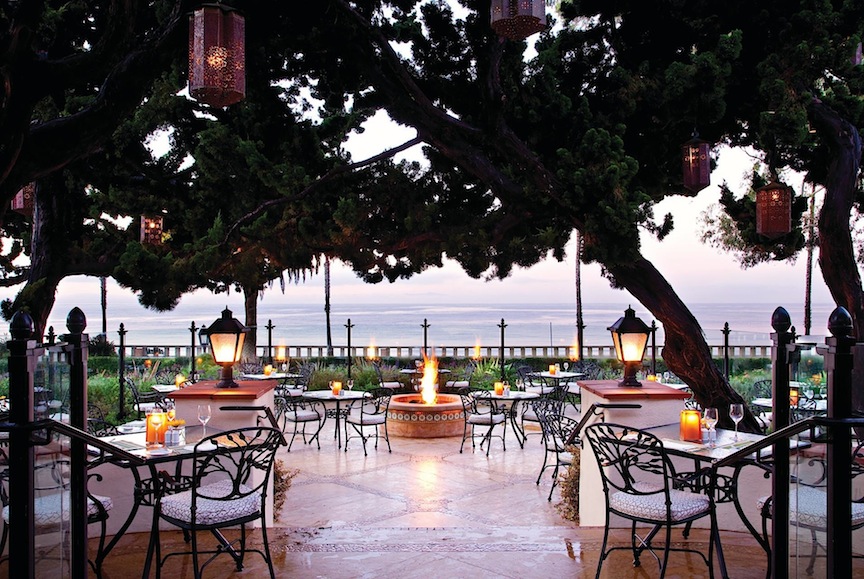 with fresh
ricotta cheese and silky olive oil, all washed down
with a dry bubbly Prosecco. For a mid-course, chef
spoiled us with spaghetti, coated in butter and
topped with delicate shavings of black truffles, a
dish flawless in both execution and flavor. Next came
tender sweetbreads, moist halibut with honey red
onions, and my favorite dish of the night, chef
Alessandro Cartumini’s veal scaloppine, set in a
shallow pool of white wine, butter, lemon and capers.
Desserts
with fresh
ricotta cheese and silky olive oil, all washed down
with a dry bubbly Prosecco. For a mid-course, chef
spoiled us with spaghetti, coated in butter and
topped with delicate shavings of black truffles, a
dish flawless in both execution and flavor. Next came
tender sweetbreads, moist halibut with honey red
onions, and my favorite dish of the night, chef
Alessandro Cartumini’s veal scaloppine, set in a
shallow pool of white wine, butter, lemon and capers.
Desserts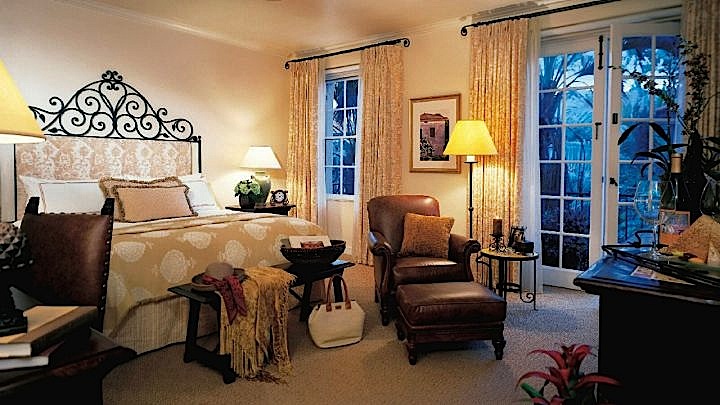 included a warm chocolate
soufflé, a refreshing pineapple meringue, and
coffee-chocolate mousse donuts. As we finished the remains our
California pinot noir, our
night ended blissfully in our suite (below), decorated
with a real feel for the Pacific coastline, airy, open
to the ocean, smelling of the salt air. We slept
very, very well.
included a warm chocolate
soufflé, a refreshing pineapple meringue, and
coffee-chocolate mousse donuts. As we finished the remains our
California pinot noir, our
night ended blissfully in our suite (below), decorated
with a real feel for the Pacific coastline, airy, open
to the ocean, smelling of the salt air. We slept
very, very well.
In
the morning, we walked the pristine streets of Santa
Barbara before embarking on our six-hour drive north
on Highway 1, the most gorgeous 240 miles I have ever
driven anywhere. The road quickly began to
narrow as we ascended up the cliffs, overlooking the
vast ocean below. The road was winding through the
mountains with sharp curves, placing a strain on our
convertible’s brakes. Looking ahead, it appeared as
though the golden beach stretched for endless miles.
Up and down and around we drove, stopping frequently
to take pictures of the stunning view below. A few
hours into our drive we approached Big Sur, one of
California’s most magnificent natural attractions.
Walking along a dirt trail we snapped pictures of the
cove, eyes drawn to the tiny waterfall that spit out
from the side of a gigantic rock formation. We sat and
stared out into the sea for about an hour before we
said goodbye and proceeded to the charming town of
Carmel.
Stay tuned.
❖❖❖
By John Mariani
 Coming off a delayed
flight from Las Vegas to JFK last week, I was happy to
learn I would be landing at the brand new Delta
Terminal 4, which replaced the decrepit, warren-like
terminal they had used for decades. I had heard so
many appealing things about this $1.3 billion
extravaganza, not least that it would have nine new
gates, many more check-in kiosks and agents, 12
security lanes, "world-class shopping," and eateries
from Danny Meyer, Marcus Samuelsson, and La Brea
Bakery. What's not to love?
Coming off a delayed
flight from Las Vegas to JFK last week, I was happy to
learn I would be landing at the brand new Delta
Terminal 4, which replaced the decrepit, warren-like
terminal they had used for decades. I had heard so
many appealing things about this $1.3 billion
extravaganza, not least that it would have nine new
gates, many more check-in kiosks and agents, 12
security lanes, "world-class shopping," and eateries
from Danny Meyer, Marcus Samuelsson, and La Brea
Bakery. What's not to love?
I'll tell you what's not to love:
unless you take off from the very first A gates (has
anyone actually ever taken off at any time from Gate 1
at any airport?), you will have a trek that can be a
half an hour or more to get out of Terminal 4. If you
look at the configuration, you'll see that the B gates
stretch way out and lead to the A gates; now look at
the jets below, probably 737s and 757s, lined up at
the gates. Since a 757 measures 155 feet in
length, if you laid 15-20 of them end to end, you
could approximate the length of the entry and exit
walk you maneuver-- I figure about two-thirds of a
mile. I came in at Gate 34, with carry-on bags.
There were families with small children and people in
wheel chairs; crowds waiting to get on a plane; crowds
exiting planes. I walk at a fast clip, yet after
ten minutes I was still nowhere near the end of the B
Gates. Fortunately, the driver of a cart with
elderly and disabled passengers stopped and asked if I
wanted a lift. I hopped on, but still, it was
another five minutes to get to baggage claim and exit!
These patently absurd but
symptomatic designs of new airports have master
planners, developers and airlines who believe that
passengers should be discomforted in every way on
their way past Brooks Bros., Radio Shack, Shake Shack,
and Mandarin Express. Were I ever to take
another flight on Delta, not knowing in advance what
gate I would be going to, I would have to factor in at
least 30-45 minutes extra time after getting through
security.
Airports like Vegas, Atlanta,
Denver, Orlando and others seem to revel in tram
railways to get passengers to far-flung gates, as if
longer and bigger is better. International
terminals have vast, long corridors like something out
of a Kafka novel to dis-engorge you to passport
control and beyond. Jet Blue's new JFK terminal is
equally labyrinthine: if you park 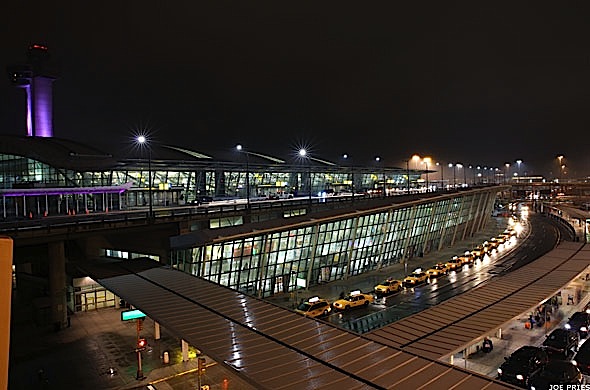 your car in the
lot or take the monorail, you'd better add one hour to
your expected time at check-in, and at certain times
(like 6 AM), the security lines at Jet Blue can number
in the several hundreds. (They charge you ten bucks in
advance to leap the line.) Then consider the wholly
human friendly older airports like LaGuardia and
Kansas City, where you get off the plane, walk past
maybe 10 gates and you are out the exit door of the
terminal. That is good design, if an old, even
outdated one. Even London's Heathrow, which can
be an endurance test to enter, is easily exited after
passport control.
your car in the
lot or take the monorail, you'd better add one hour to
your expected time at check-in, and at certain times
(like 6 AM), the security lines at Jet Blue can number
in the several hundreds. (They charge you ten bucks in
advance to leap the line.) Then consider the wholly
human friendly older airports like LaGuardia and
Kansas City, where you get off the plane, walk past
maybe 10 gates and you are out the exit door of the
terminal. That is good design, if an old, even
outdated one. Even London's Heathrow, which can
be an endurance test to enter, is easily exited after
passport control.
The increase in air travel
has made bigger terminals necessary but their
designers seem far more interested in attracting
retail shops than to make it easy for passengers to
get to their planes. One need not be nostalgic
for the old days of JFK's Pan Am Terminal (built in
1960, long occupied by Delta, soon to be demolished),
when a parent could bring a child flying alone right
on the plane, and a wheelchair-bound passenger didn't
need to arrive at 9 AM to make a 3 PM flight.
One need only wonder why, when air travel has become
so egregiously torturous, Delta has chosen to make a
titanic blunder like Terminal 4 and be proud of it. I,
for one, will look into any alternative to Delta when
booking my flights out of JFK in the future.
Life is too short to waste in an airport.
❖❖❖
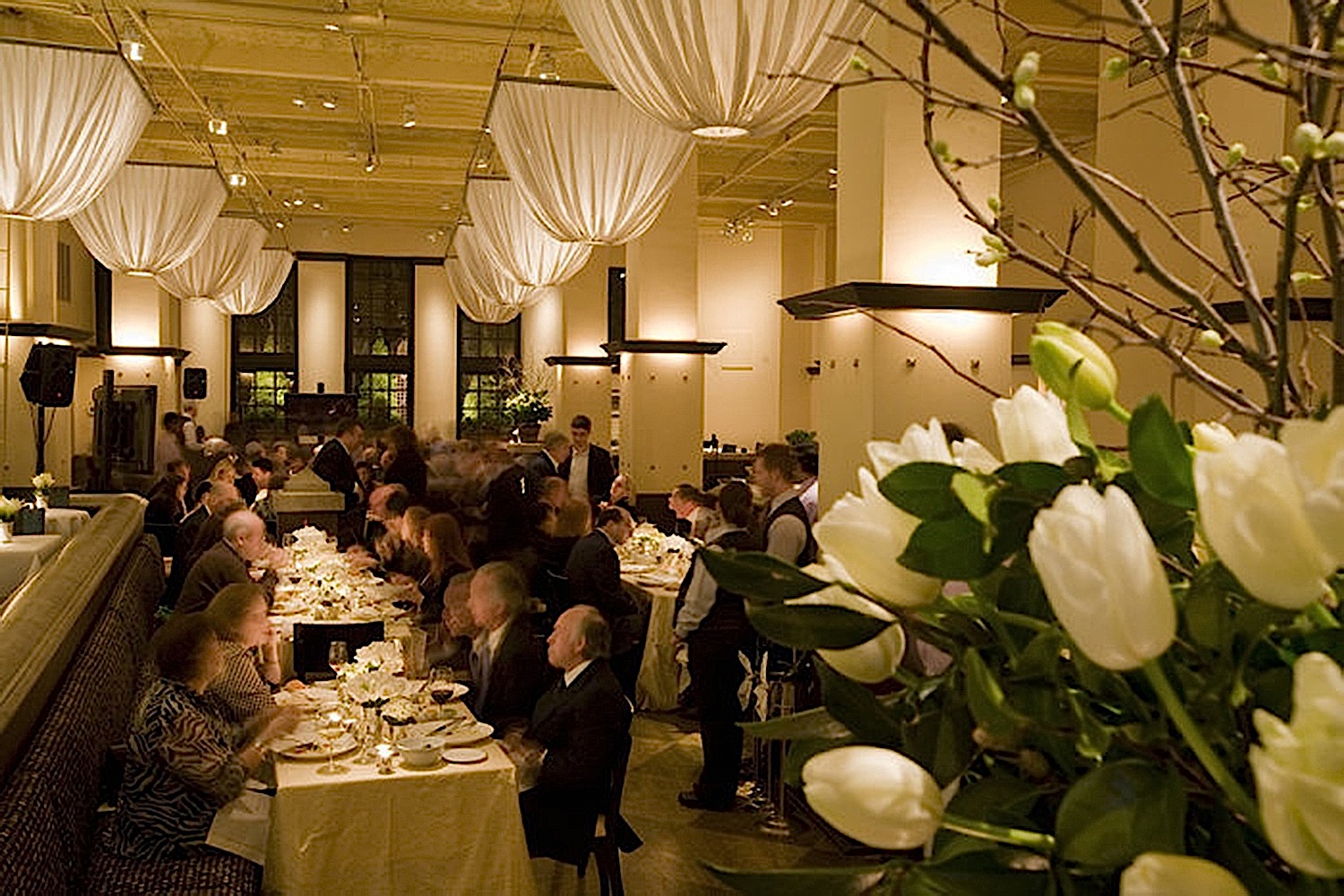
12 EAST 12th STREET (off Fifth Avenue)
212-620-4020
www.gothambarandgrill.com
Next year Gotham Bar and Grill will
celebrate its 30th anniversary--and astonishment for
any restaurant but for one of GB&G's
extraordinary high standards of food and service, it
is reason to rejoice that, when all the hipster
holes-in-the-walls sink to oblivion, a few, rare
places like GB&G will thrive.
There are very
few in that firmament, and it is wholly to the
credit of chef/owner Alfred Portale and his
partners, Jeff Bliss,
Jerry Kretchmer, Richard and Robert Rathe, along
with Chef de cuisine Livio Velardo,
pastry chef Ron Paprocki, g-m Bret Csencsitz, and
sommelier Eric Zillier, all of whom work with the
kind of interactive finesse that makes for a evening
that will be as flawless as possible. Three decades
in business makes practice near perfect.
The design of the three-level
room, with its high ceilings, serious bar, affable
host station, and perfect lighting has
endured--despite the removal of the beloved
mini-Statue of Liberty that used to be here--and,
with tweaking over the years, tells you more about
the New York spirit than almost any other restaurant
in town. And you'll spot a number of New York celebs
here any night of the week, too, whether they are
from the media, fashion or show business.
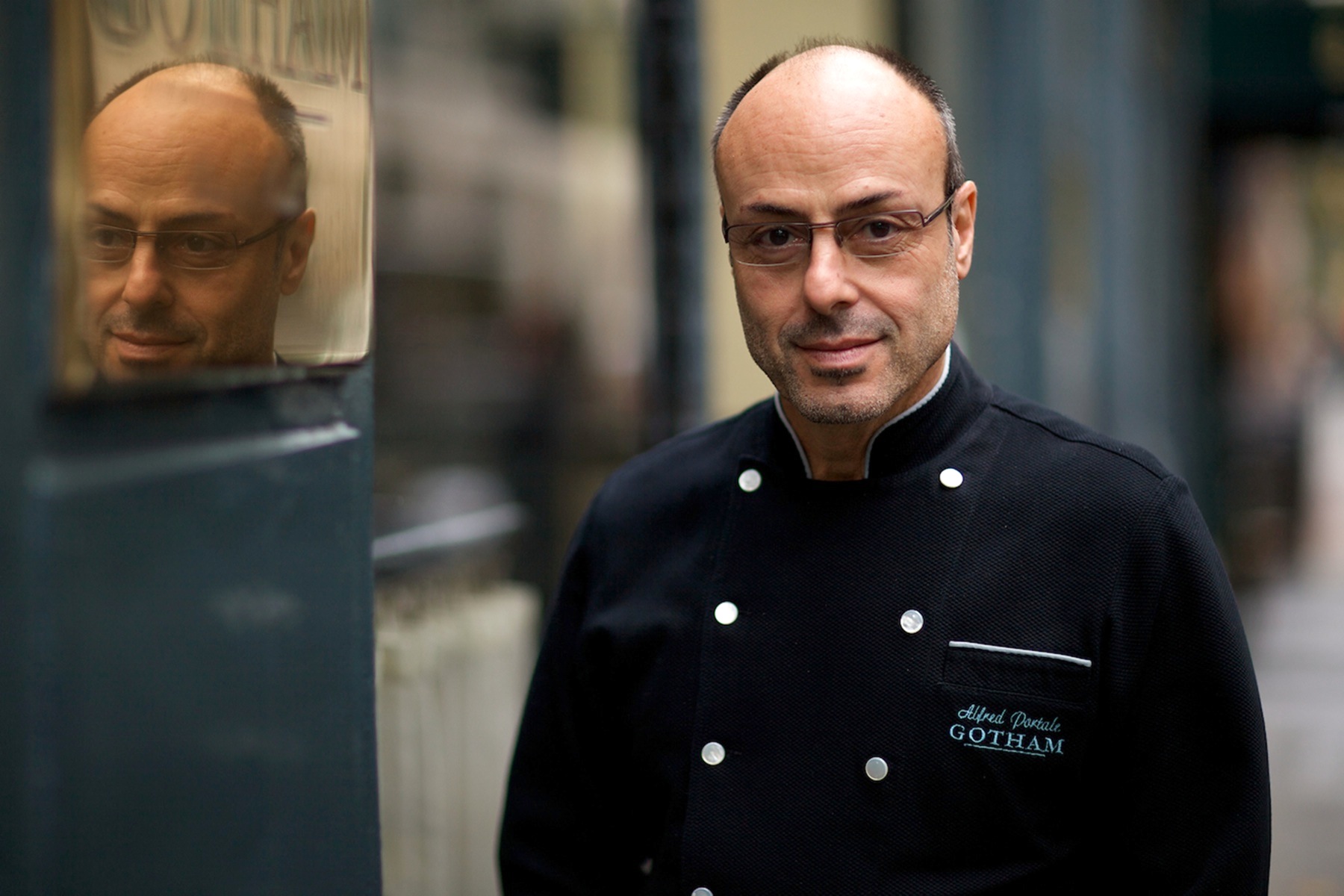 Portale
himself (left)
has always served his own style of grownups’ food,
never trendy, never given over to a fad for gourmet
pizzas or meatballs. He created a style, now not
much in evidence at GB&G, famous for its
“towering” dishes of lavishly layered ingredients
that was Portale’s trademark early on and much
copied everywhere. What he does do, as
well or better than anyone else, is to build in
layers of rich flavors based on woodsy mushrooms,
bitter-salty greens, and impeccably reduced sauces.
What he does not do is leave his kitchen very much;
his only real foray outside of GB&G has been a
steakhouse in Miami Beach's Fontainebleau Resort.
Portale
himself (left)
has always served his own style of grownups’ food,
never trendy, never given over to a fad for gourmet
pizzas or meatballs. He created a style, now not
much in evidence at GB&G, famous for its
“towering” dishes of lavishly layered ingredients
that was Portale’s trademark early on and much
copied everywhere. What he does do, as
well or better than anyone else, is to build in
layers of rich flavors based on woodsy mushrooms,
bitter-salty greens, and impeccably reduced sauces.
What he does not do is leave his kitchen very much;
his only real foray outside of GB&G has been a
steakhouse in Miami Beach's Fontainebleau Resort.
Zillier's wine list is one of the
finest and best balanced in NYC, and in any category
you wish, he will be a savvy and amenable guide.
My wife and I sat on the little
tier above the main part of the dining room, looking
out on some foliage in this summery section of
Greenwich Village. The place was packed, as it
usually is, with tables of business people
conducting business, TV 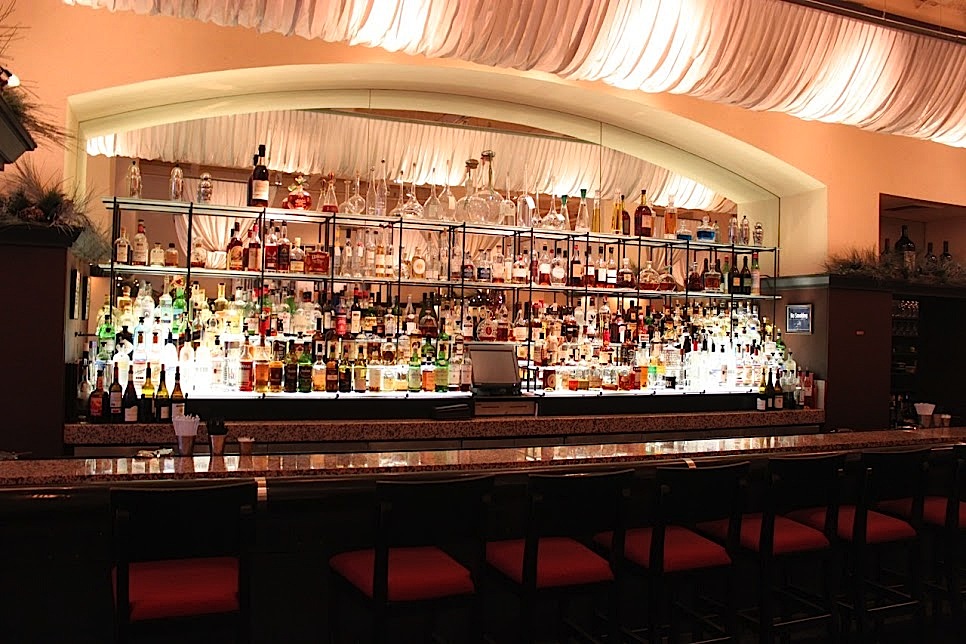 network
anchormen entertaining guests, and people you just
know are regulars, who perceive this as a restaurant
that suits their high degree of taste. I wish
I were a regular, but in lieu of that, I get to
build up excitement about the rare occasion I do get
to visit.
network
anchormen entertaining guests, and people you just
know are regulars, who perceive this as a restaurant
that suits their high degree of taste. I wish
I were a regular, but in lieu of that, I get to
build up excitement about the rare occasion I do get
to visit.
We began with an impeccably
rendered terrine of foie gras and chicken, the
latter adding extra flavor to the duck liver, served
with morel mushrooms, toasted hazelnuts,
baby chioggia beets and buttery brioche toast--the
kind of dish a restaurant of this ilk must do well.
Spring vegetable risotto, containing peas, rainbow
carrots, spring onions, smoked bacon, parmesan and
mint, while not rigorously Italian, had all the
brightness of the season in it, the bacon giving the
delicacy a saline balance. Goat's cheese agnolotti
were equally savory, the plump fresh pasta pockets
filled with morels, fava beans, baby leeks,
and parmesan. With these Zillier chose a 2010
Bourgogne Blanc Bernard Moreau.
Our entrees
showed the same expertise as similar dishes have
over the decades, meaning that Portale's sense of
classic technique is critical to presenting a pigeon
roseate, pink inside and crisp on the outside, with
tender gnocchi, seared foie gras, fennel orange
compote and squab jus, each element aligned for
equilibrium of taste and texture. My wife
enjoyed a Berkshire pork chop that might well be a
model for what fine quality pork should be, nicely
fatted, tender, full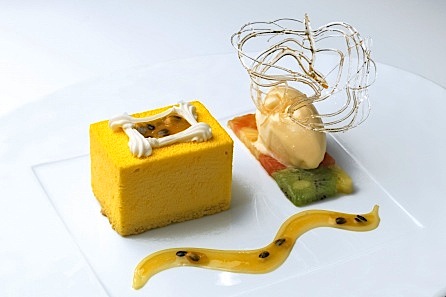 of flavor,
with roasted fennel, braised radicchio, escarole,
bacon, apple, marble potatoes and a sweet-sour
balsamic reduction, all the better with a 2006
Nuits–Saint-Georges “Aux Boudots”
Jérôme Chezeaux.
of flavor,
with roasted fennel, braised radicchio, escarole,
bacon, apple, marble potatoes and a sweet-sour
balsamic reduction, all the better with a 2006
Nuits–Saint-Georges “Aux Boudots”
Jérôme Chezeaux.
Our desserts stayed at the same
level of balanced sophistication--a vanilla
semifreddo with passion fruit cream, palm seeds,
coconut foam, mango basil sorbet, and Ron Paprocki's chocolate brownie
with a crunch of pistachio,
succulent cherries, buckwheat streusel,
chocolate crèmeux, and lemon thyme ice cream.
When asked by friends from out of
town where they should eat in NYC, I expect their
interest to lie with new, much-talked-about
restaurants. But my tendency is to tell them
that, if they truly wish to see and taste a
restaurant that evokes all that is wonderful about
New York, it is a place like Gotham Bar and Grill
that will be a one of their best, most delectable
memories for years to come.
Open for lunch Mon. - Fri.; dinner nightly. Dinner
appetizers $18-$29, entrees $35-$52. There is
a remarkable $28 lunch.
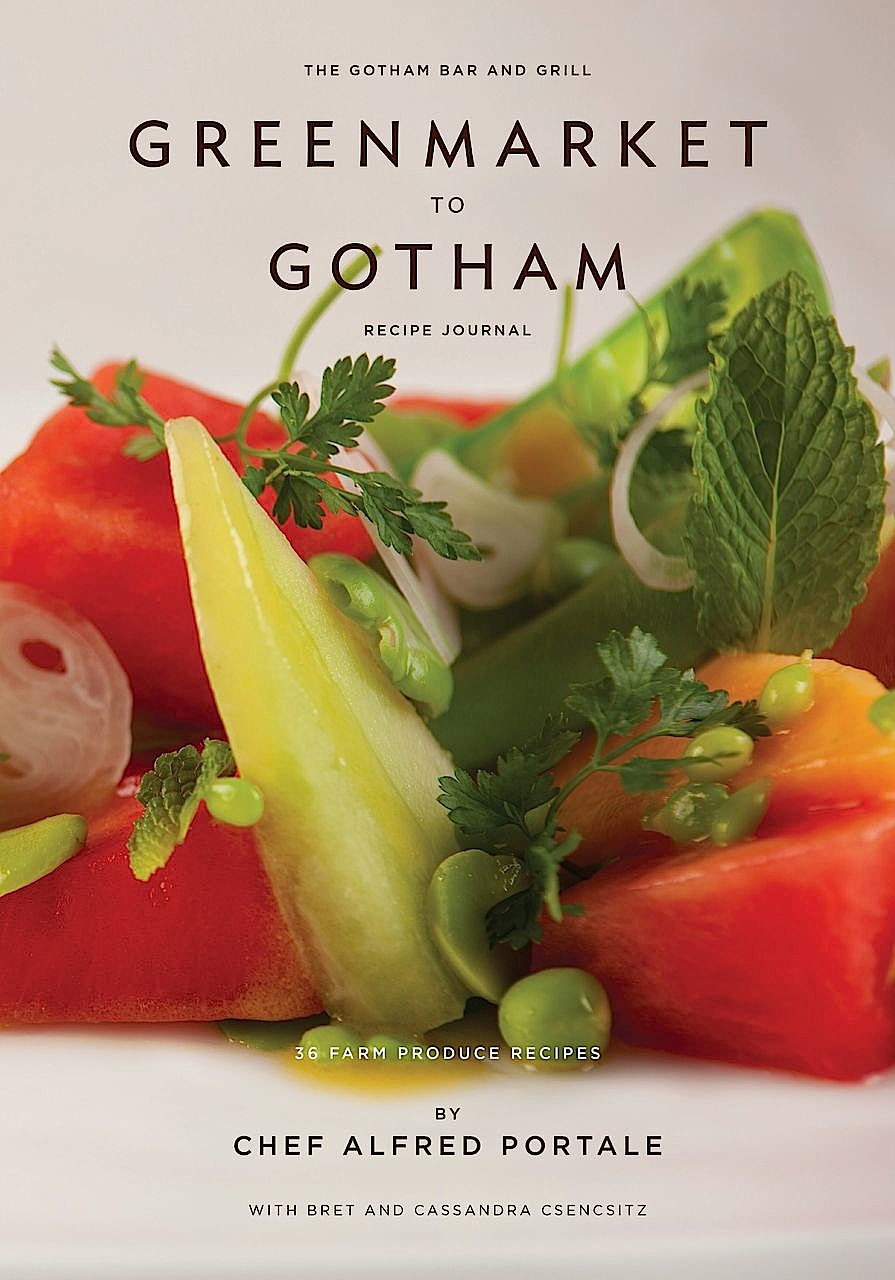
Alfred Portale has written a new book, Greenmarket
to Gotham,
with Bret and Cassandra Czencsitz.
❖❖❖
MATCHING CHILEAN WINES TO CHILEAN CUISINE
by Mort Hochstein
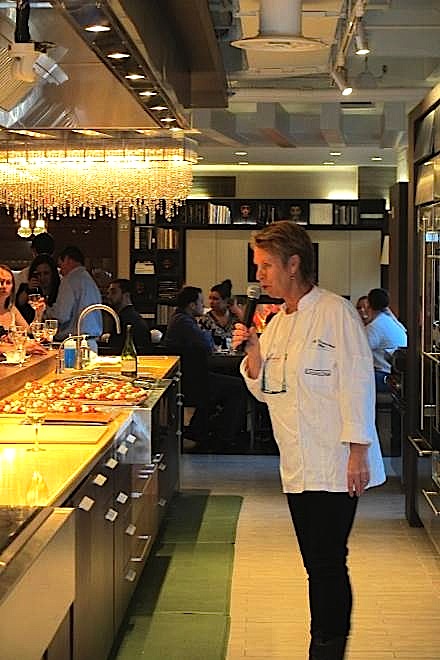 I
have never obsessed about matching wine and
food. My table has always been
simple—red with meat, white with fish and
variations for chicken and lighter meats. I
have experienced sheer pleasure on occasions
when a great red or white perfectly
complements a dish, but I don’t work at it,
being reminded of the Germans, who
have happily paired their Rieslings with whatever
the kitchen provides.
I
have never obsessed about matching wine and
food. My table has always been
simple—red with meat, white with fish and
variations for chicken and lighter meats. I
have experienced sheer pleasure on occasions
when a great red or white perfectly
complements a dish, but I don’t work at it,
being reminded of the Germans, who
have happily paired their Rieslings with whatever
the kitchen provides.
That said, I am still savoring
the memory of an informal lunch where the chef
achieved a delightful marriage of the elements.
The chef was Ruth Van Waerebeek (left), whose
cooking arc began at the side of her mother,
grandmother and great-grandmother in Ghent,
Belgium. As a young adult, she sailed
a small two-person yacht across several oceans,
stopping for learning forays at restaurant
kitchens in Africa, South America and the
Caribbean, returning to Belgium to become a chef
at the trendy Dona Flor in Brussels. She
then went back to the Caribbean as head chef for
the Hotel Mount Nevis in Nevis, and finally to New
York as executive chef for Seagram, once the
nation’s dominant wine and spirits importer.
She further polished her
Southern Hemisphere chops in the United
States, taking cues from Nuevo Latino chefs such
as Douglas Rodriguez and Norman van Aiken of
Miami and Guillermo Peron of Philadelphia.
From all her culinary exploration, chef Ruth has
created a dramatic, yet uncomplicated
marriage of many unfamiliar foods and exotic
cuisines with the classic French cooking
techniques she learned in her youth.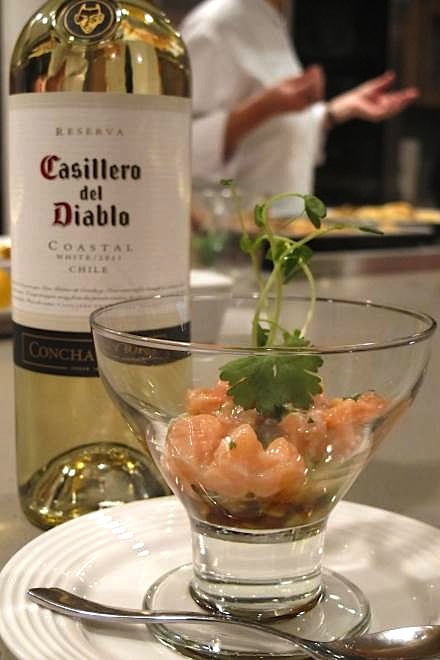
I enjoyed an exciting
demonstration of her cooking at a recent
promotional tasting of the wines of Concha y Toro,
where chef Ruth, based in Chile, consults on
cuisine. I’ve been a Concha Y Toro fan for
half a century, since 1963, when the wines were
first imported from Chile and my neighborhood wine
merchant introduced me to a new and
inexpensive label. I tried a couple, bought
a case and have been hooked on them ever
since. They are, simply put, great wines for
the price and have been awarded many honors for
their quality and value.
So, we were tasting everyday
wines with a world class chef, and she made them
shine. The first was Casillero
del Diablo Coastal Blend, an entry level
white with a touch of sweetness from Muscat ($12,
though likely available for several dollars less),
along with a Gran Reserva
Sauvignon Blanc ($18) and a more elegant
wine, Marques
de Casa Concha Chardonnay
($23). Chef Ruth matched them with
salmon seviche (right)
in cucumber rolls with a spicy Asian dip
sauce, and a parmesan cheese budino, a
cloud-light, nutmeg-tinged pudding served in a
ramekin of lichis, cubed and blended into an
accompanying salad of chives, cilantro and chervil
leaves and dressed with olive oil and lemon
juice. Tang and spice 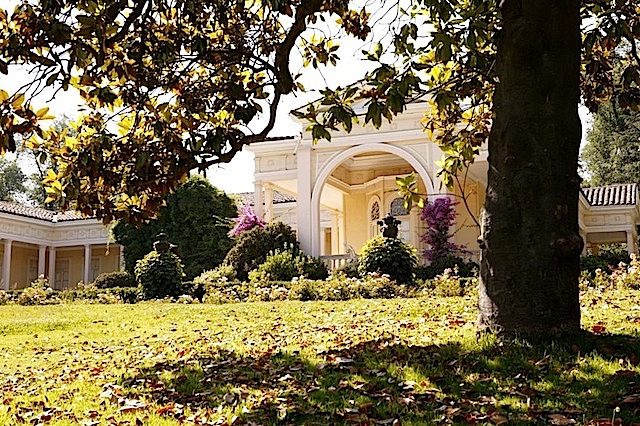 lit up those pairings, but the
ingredients were acutely balanced and worked
together ideally. Of the three whites, my nod went
to the Sauvignon Blanc, which paired best with the
mix of flavors.
lit up those pairings, but the
ingredients were acutely balanced and worked
together ideally. Of the three whites, my nod went
to the Sauvignon Blanc, which paired best with the
mix of flavors.
The Casillero
del Diablo name originated in the 1890s,
when founder Don Melchor Concha Y Toro took losses
from thieves looting his wine cellar. He posted a
frightening placard on his cave, "Casillero
del Diablo"--cellar of the devil--an ominous
sounding title designed to ward off intruders.
Concha, as in the Chardonnay and the founder’s
name, is Spanish for seashell.
In another appetizing combination,
Chef Ruth prepared a savory tart: gouda cheese
spiced with chunks of gorgonzola, sliced
figs and walnuts, embellished with arugula leaves.
It was not the match I would have conceived for
the Casillero
del Diablo Privada ($14), but here she had
an everyday red that could go with the cheese and
the elements that surrounded it.
For the
heavy artillery, a Marques de
Casa Concha Cabernet Sauvignon ($28), she
reached into her South American cookbook to set
out grilled lamb skewers in a smoked chili pepper
marinade with yogurt, onion, garlic rosemary and
olive oil. That package of flavors went to another
level with its accompaniments, Chilean mint salsa
and stir-fried quinoa.
I’ve been privileged to
enjoy many professional wine and food tastings,
but none where the wines were so well matched,
while still affordable.
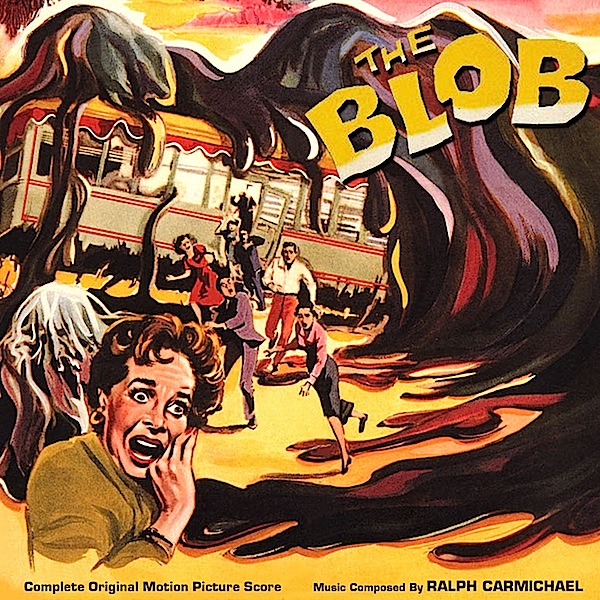 WEIRDEST
OPENING LINE FOR A RESTAURANT
WEIRDEST
OPENING LINE FOR A RESTAURANT REVIEW THUS FAR THIS YEAR
"If you
thought the first thing you'd see when you landed
in Quebec City, Canada, was a mime in a black mock
turtleneck playing `My Heart Will Go On' on an
accordion, you'd be almost right. Almost, because
the Blob promptly devoured him — chewy! — and went
on to enjoy a brief culinary tour of one of the
most charming, clean, and friendly cities she's
visited."--
"The Blob eats Quebec," SFBG Online.
BUT JUST THINK OF ALL THOSE REWARDS
POINTS HE GOT ON HIS AMEX CARD!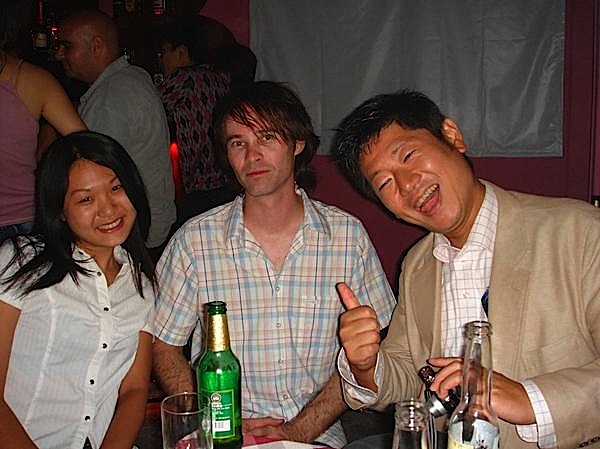
A
judge in Kyoto has ruled that an unnamed
16-year-old, who borrowed his father's American
Express Platinum card to run up a bill for 5.5
million yen, including a $3,700 bottle of
Champagne to entertain some party girls, was not
really at fault. His father had to pay $7,900,
though the nightclubs and bars didn't check his
son’s I.D.
Any of John Mariani's
books below may be ordered from amazon.com.
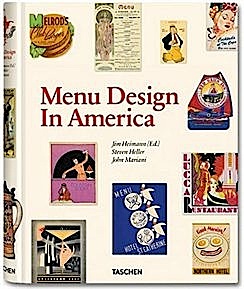 |
My latest book, which just won the prize for best book from International Gourmand, written with Jim Heimann and Steven Heller, Menu Design in America, 1850-1985 (Taschen Books), has just appeared, with nearly 1,000 beautiful, historic, hilarious, sometimes shocking menus dating back to before the Civil War and going through the Gilded Age, the Jazz Age, the Depression, the nightclub era of the 1930s and 1940s, the Space Age era, and the age when menus were a form of advertising in innovative explosions of color and modern design. The book is a chronicle of changing tastes and mores and says as much about America as about its food and drink.
“Luxuriating vicariously in the pleasures of this book. . . you can’t help but become hungry. . .for the food of course, but also for something more: the bygone days of our country’s splendidly rich and complex past. Epicureans of both good food and artful design will do well to make it their coffee table’s main course.”—Chip Kidd, Wall Street Journal.
“[The menus] reflect the amazing craftsmanship that many restaurants applied to their bills of fare, and suggest that today’s restaurateurs could learn a lot from their predecessors.”—Rebecca Marx, The Village Voice. |
"Eating Italian will never be the same after reading John Mariani's entertaining and savory gastronomical history of the cuisine of Italy and how it won over appetites worldwide. . . . This book is such a tasteful narrative that it will literally make you hungry for Italian food and arouse your appetite for gastronomical history."--Don Oldenburg, USA Today. "Italian
restaurants--some good, some glitzy--far
outnumber their French rivals. Many of
these establishments are zestfully described
in How Italian Food Conquered the World, an
entertaining and fact-filled chronicle by
food-and-wine correspondent John F.
Mariani."--Aram Bakshian Jr., Wall Street
Journal.
"Equal parts
history, sociology, gastronomy, and just
plain fun, How Italian Food Conquered the
World tells the captivating and delicious
story of the (let's face it) everybody's
favorite cuisine with clarity, verve and
more than one surprise."--Colman Andrews,
editorial director of The Daily
Meal.com. "A fantastic and fascinating
read, covering everything from the influence
of Venice's spice trade to the impact of
Italian immigrants in America and the
evolution of alta cucina. This book will
serve as a terrific resource to anyone
interested in the real story of Italian
food."--Mary Ann Esposito, host of PBS-TV's
Ciao
Italia. "John Mariani has written the
definitive history of how Italians won their
way into our hearts, minds, and
stomachs. It's a story of pleasure over
pomp and taste over technique."--Danny Meyer,
owner of NYC restaurants Union Square Cafe,
Gotham Bar & Grill, The Modern, and
Maialino.
|
 |
 |
 |
 |
 |
 |
 |
 |
 Everett Potter's Travel Report:
Everett Potter's Travel Report: 
 Eating Las Vegas
is the new on-line site for Virtual Gourmet
contributor John A. Curtas., who since 1995
has been commenting on the Las Vegas food
scene and reviewing restaurants for Nevada
Public Radio. He is also the
restaurant critic for KLAS TV, Channel 8 in
Las Vegas, and his past reviews can be
accessed at KNPR.org.
Click on the logo below to go directly to
his site.
Eating Las Vegas
is the new on-line site for Virtual Gourmet
contributor John A. Curtas., who since 1995
has been commenting on the Las Vegas food
scene and reviewing restaurants for Nevada
Public Radio. He is also the
restaurant critic for KLAS TV, Channel 8 in
Las Vegas, and his past reviews can be
accessed at KNPR.org.
Click on the logo below to go directly to
his site.

Tennis Resorts Online: A Critical Guide to the World's Best Tennis Resorts and Tennis Camps, published by ROGER COX, who has spent more than two decades writing about tennis travel, including a 17-year stretch for Tennis magazine. He has also written for Arthur Frommer's Budget Travel, New York Magazine, Travel & Leisure, Esquire, Money, USTA Magazine, Men's Journal, and The Robb Report. He has authored two books-The World's Best Tennis Vacations (Stephen Greene Press/Viking Penguin, 1990) and The Best Places to Stay in the Rockies (Houghton Mifflin, 1992 & 1994), and the Melbourne (Australia) chapter to the Wall Street Journal Business Guide to Cities of the Pacific Rim (Fodor's Travel Guides, 1991).


MARIANI'S VIRTUAL GOURMET
NEWSLETTER is published weekly. Editor/Publisher: John
Mariani.
Contributing Writers: Christopher Mariani, Robert Mariani,
John A. Curtas, Edward Brivio, Mort Hochstein,
Suzanne Wright, and Brian Freedman. Contributing
Photographers: Galina Stepanoff-Dargery,
Bobby Pirillo. Technical Advisor: Gerry McLoughlin.
© copyright John Mariani 2013
